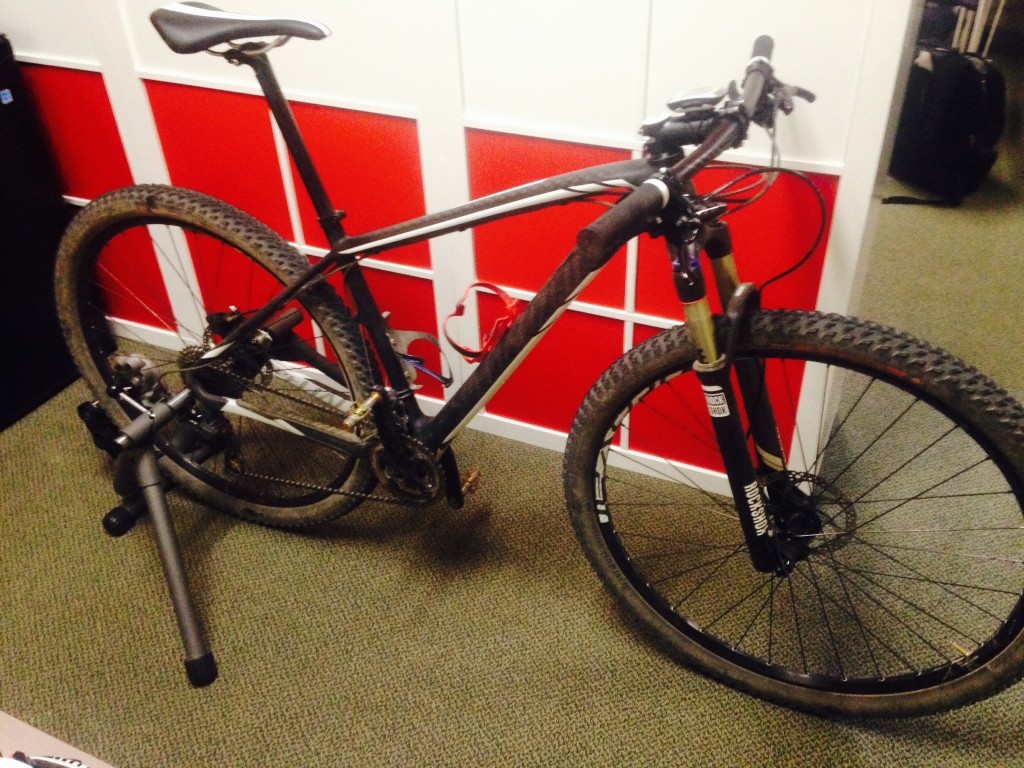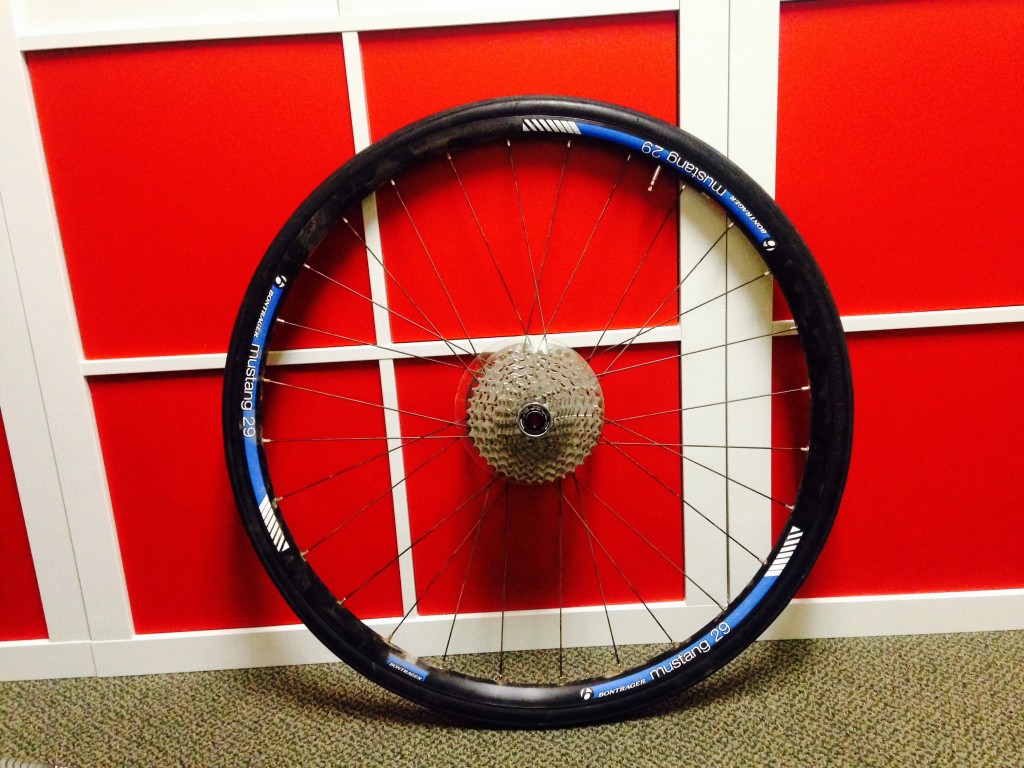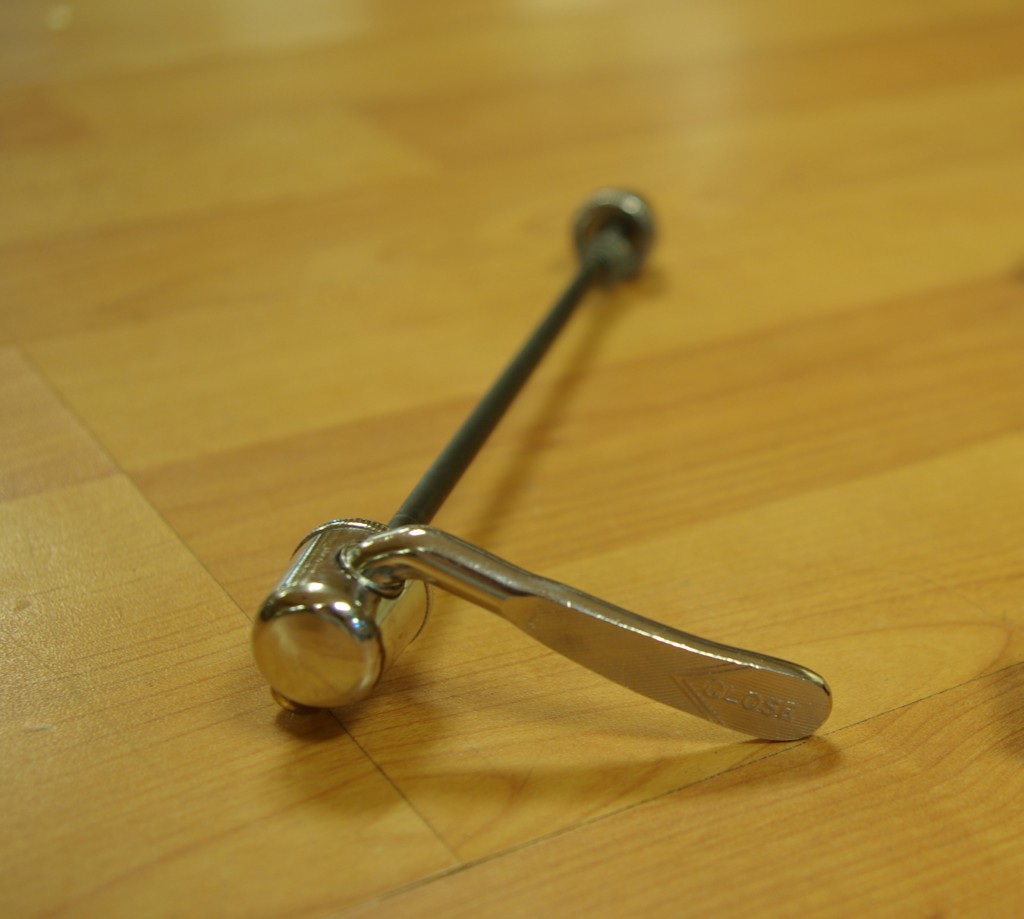Getting Started on TrainerRoad – MTB Edition
We’ve been working hard on creating a solid platform for off road athletes to improve their fitness and speed. Our new mountain bike training plans are designed to go after those unique fitness characteristics that make you faster on the trail, and can be adapted for just about any type of mtb racing. As more and more dirt-only athletes begin to dedicate time to improving fitness, I wanted to discuss just how simple it is to get your mountain bike set up on TrainerRoad.
Tires
The majority of the trainers on the market today will require a slick tire for the rear. If you have rollers, you’ll also need a slick tire for the front, unless of course you don’t mind the buzzing and vibration of rolling with your knobbies (not recommended).
If you have a 29er, your average 700×23 road tire will work just fine.
If you’re riding a 26″ or 27.5″, you’ll need to make a trip to your local bike shop or hit up your favorite online bike parts website to find a tire.
Tip: When it comes to trainer tires, think cheap. Extra grams don’t matter when you’re riding in your living room.
Also, tires tend to heat up quite a bit while you’re riding indoors, so you don’t want to burn up an expensive tire. Trainer-specific tires like this Vittoria are great and affordable options.
The Tubeless Dilemma
If you’re like me, taking your messy tubeless tire off and replacing it with a slick every time you want to get a good TR workout in is simply not an option.
A good solution is to find a cheap rear wheel and cassette on eBay, a local bike shop, or just ask around at a local ride (you’d be surprised with the amount of spare parts your friends have).
Just like with tires, this does NOT have to be a nice wheel. It just needs to be true and fit the correct cassette for your bike.
Fortunately, brakes are completely unnecessary for this extra wheel. However, if you have disc brakes, be careful to not squeeze the lever if you decide to not put a disc on the wheel.
Sometimes getting a little stopper to put between the pads can be useful if you find yourself grabbing for brakes at the end of a workout.
Skewers
Unless you’re riding on rollers or a Kickr, chances are you’re going to need a skewer.
Many times you can get away with the skewer that’s already on your bike, but be careful, as the torque from pedaling while the bike is locked into the trainer can damage your high-end skewer.
What’s the best type of skewer for a trainer? These old-school, bulky, metal ones. They are also one of the cheapest.
Extra Wide Dropouts & Through-Axles
There was a time when just about every mountain bike out there had the same 9mm quick release in the back. Those times are long gone. Now you’ve got a wide variety of dropout widths and through-axle sizes that can make things a little tricky when trying to get your bike onto a trainer.
Fortunately, most of the big trainer companies have began coming out with solutions for us off road riders. Depending on exactly what your setup is, companies like Cycleops, Kinetic, and Kickr all have adapters for just about any axle/dropout combo you may have.
Learn more about mountain bike training.
So what’s stopping you? Get the work done indoors so you can smoke your friends outdoors. Pick a plan today and see what some added fitness can do for your riding and racing.
See you on the trails,
For more answers to your cycling training questions, listen to our podcast Ask a Cycling Coach — the only podcast dedicated to making you a faster cyclist. New episodes are released weekly.


